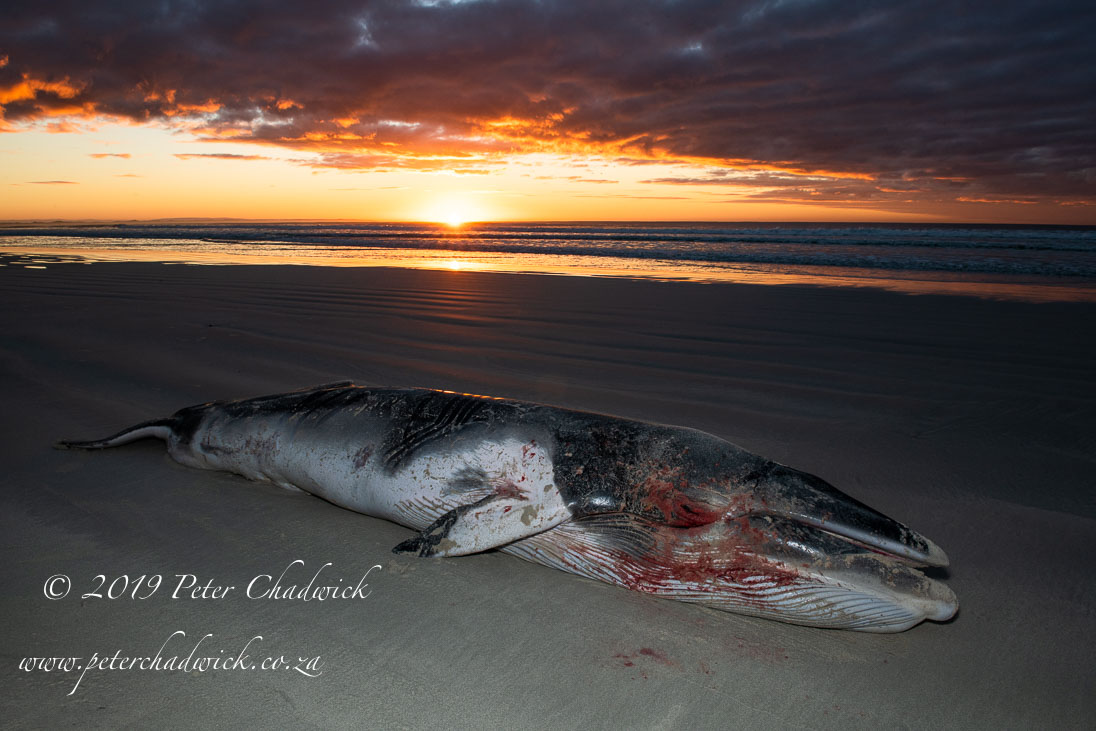
A few days ago, a report of a whale stranding was listed on the South African Turtle Rescue Network that is managed by the Two Oceans Aquarium. The picture showed a juvenile Dwarf Minke Whale that had washed up dead on the beach of Struisbaai in the Western Cape of South Africa.
Having never seen one of these animals and also having assisted with previous whale standings for the gathering of scientific information, I headed down to the beach before dawn the following morning and soon found the whale that was 2,3 meters in length. Calls where made to the appropriate authorities to let them know of the stranding and to ask what information they needed. Each stranding offers an opportunity to not only gather critical morphological information on the animal but also importantly allows for the possible determination of death. In a world with rapidly changing and degrading oceans due to negative anthropogenic influences it is imperative that we gather as much information as possible about our impacts. A little later, the juvenile whale was collected by the marine mammal scientists from the Department of Environmental Affairs – Oceans and Coasts branch and they will do a full necropsy on the animal, ensuring all the information is correctly recorded and reported on.
According to the brilliant and informative book “Whales and Dolphins of the Southern African Sub-region” by the late Dr Peter Best, Dwarf Minke Whales were only recognised as a distinct taxon as recently as 1985 and occur in the oceans of the southern hemisphere. They are recorded as feeding on lanternfish and are around 1,9 meters at birth and reach an adult length of around 7 meters. They are listed as data sufficient in the South African Red Data Book, showing that little is known about their conservation status and CITIES lists them on Appendix 1.
When I arrived on the beach it was interesting to also note that Kelp Gulls had gathered around the carcass and were pecking on it around the mouth area and in all likelihood it was one of them that had pecked out one of the eyes that led to all of the blood around the head region. Also present where two pairs of African Black Oystercatchers that seemed to be feeding on the beach invertebrates that had gathered around the carcass.
There is still so much that we can learn about the environment and the oceans and it is imperative that we do so to enable us to make the correct conservation decisions for the health of the oceans and their inhabitants.

